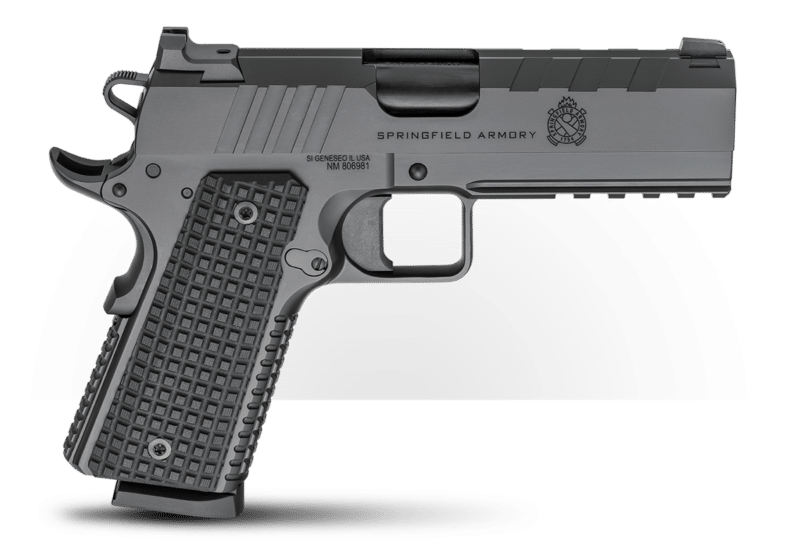Submachine Guns of World War II
May 19th, 2020
6 minute read
World War II changed everything about life on planet earth. During this time, 56 million people lost their lives, and spinoff technology from war-related projects revolutionized everything from engineering, material science and electronics to transportation and food. Those terrible six years also saw quantum advances in small arms development — and just one part of this was a veritable explosion of submachine gun development.
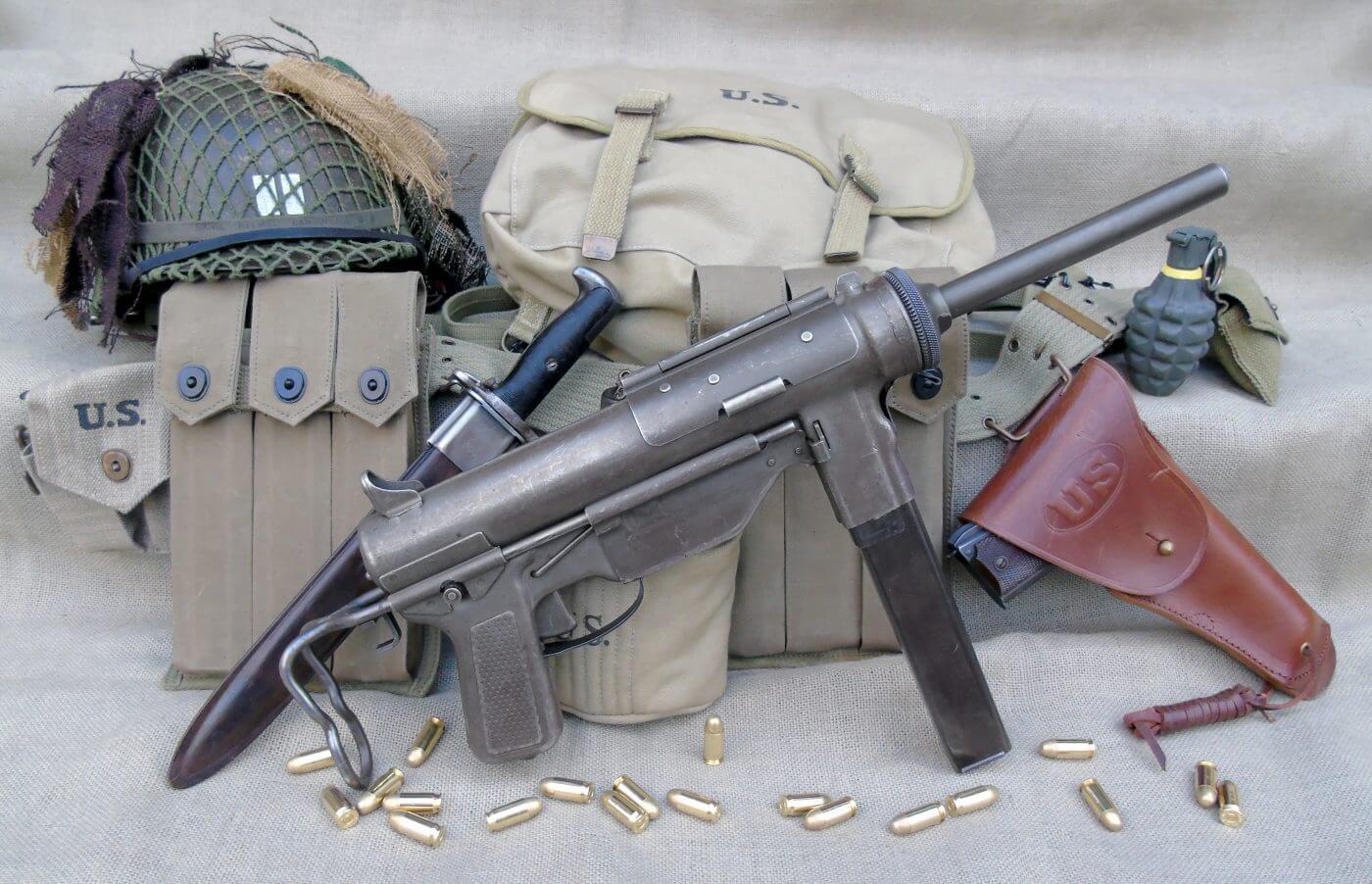
Submachine guns (SMG’s) are compact fully automatic shoulder arms that fire relatively low-powered pistol cartridges. In the days before widespread use of body armor, the SMG reigned supreme as the ultimate room-clearing tool and short-range weapon. Practically every major combatant nation of the war had them, and their influence remains evident even today.
Germany
While the Germans suffered from a deplorable lack of standardization during World War II, the most common German SMG of the war was the iconic 9mm MP40.
The MP40 was an evolutionary development of the previous MP38. Where the MP38 was crafted around an extruded steel tube machined with flutes for decreased weight and increased strength, the MP40 used an inexpensive stamped steel receiver. Both guns look very similar. The MP38 can be identified at a glance by its longitudinal receiver grooves and a dime-sized hole in the magazine well.
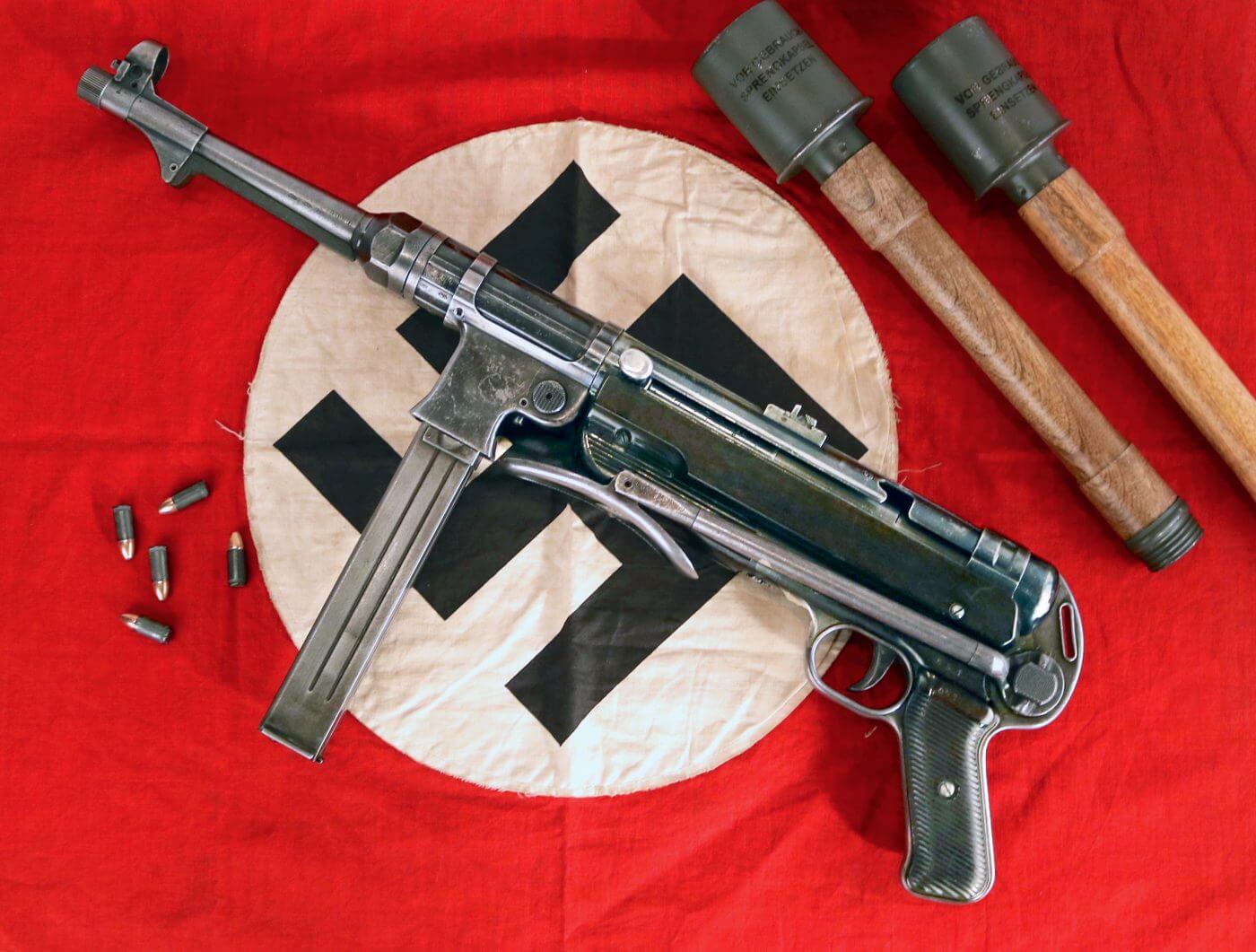
The full auto-only 9mm MP40 was the first major military weapon to eschew wooden stocks. The furniture on the German gun was formed from synthetic Bakelite, and the rest of the weapon was optimized for mass production.
The MP40 enjoyed a sedate 500 rpm rate of fire and was remarkably front heavy. This feature combined with its nine-pound weight and modest 9mm chambering made the gun exceptionally controllable. About 1.1 million copies were produced between 1940 and 1944 before it was supplanted by the 7.92mm MP44 assault rifle (also known as the StG44).
Britain
After Dunkirk, the United Kingdom found itself with an army essentially intact but bereft of weapons. With the Germans poised to strike across the channel, the British desperately needed an inexpensive combat firearm that could be produced en masse using rudimentary equipment. Reginald Shepherd and Harold Turpin working at Enfield ultimately developed a truly revolutionary subgun — the Sten, named for the “S” and “T” of their names combined with the “en” of Enfield.
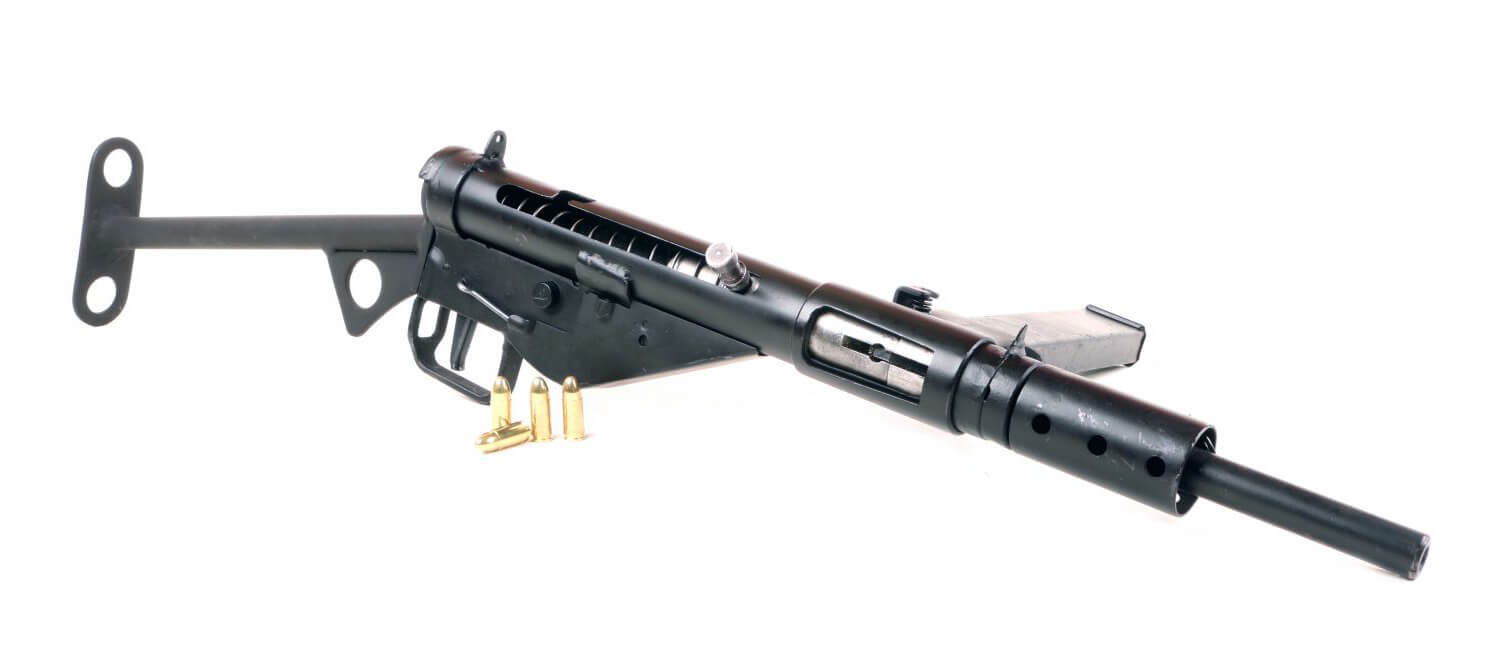
The selective-fire 9mm Sten in its simplest form consisted of a mere 47 parts and cost $9 to produce. That’s about $126 today. This pressed steel subgun cycles at around 500 rpm and feeds from a side-mounted double-stack, single-feed pressed steel 32-round magazine. The Sten breaks down easily into tidy components suitable for concealment and was widely distributed to underground forces in occupied Europe as a result.
The Sten gun was derided as the “Stench Gun” or “Plumber’s Nightmare” by its many detractors. The action was generally reliable, though the magazine fared poorly, particularly in dirty, sandy environments. The side-mounted magazine made operations from the prone convenient, something that doesn’t mean a great deal unless you’ve ever actually ducked incoming fire. The gun weighed a bit north of 7 pounds, and around 4.5 million copies were produced.
Soviet Union
More so than any other major combatant, the Russians faced an existential threat from the Nazis. Operation Barbarossa, the largest military invasion in human history, saw some three million Axis troops invade the Soviet Union in the summer of 1941 over an 1,800-mile front. With its national survival on the line, the Russians churned out submachine guns like their very lives depended upon it.
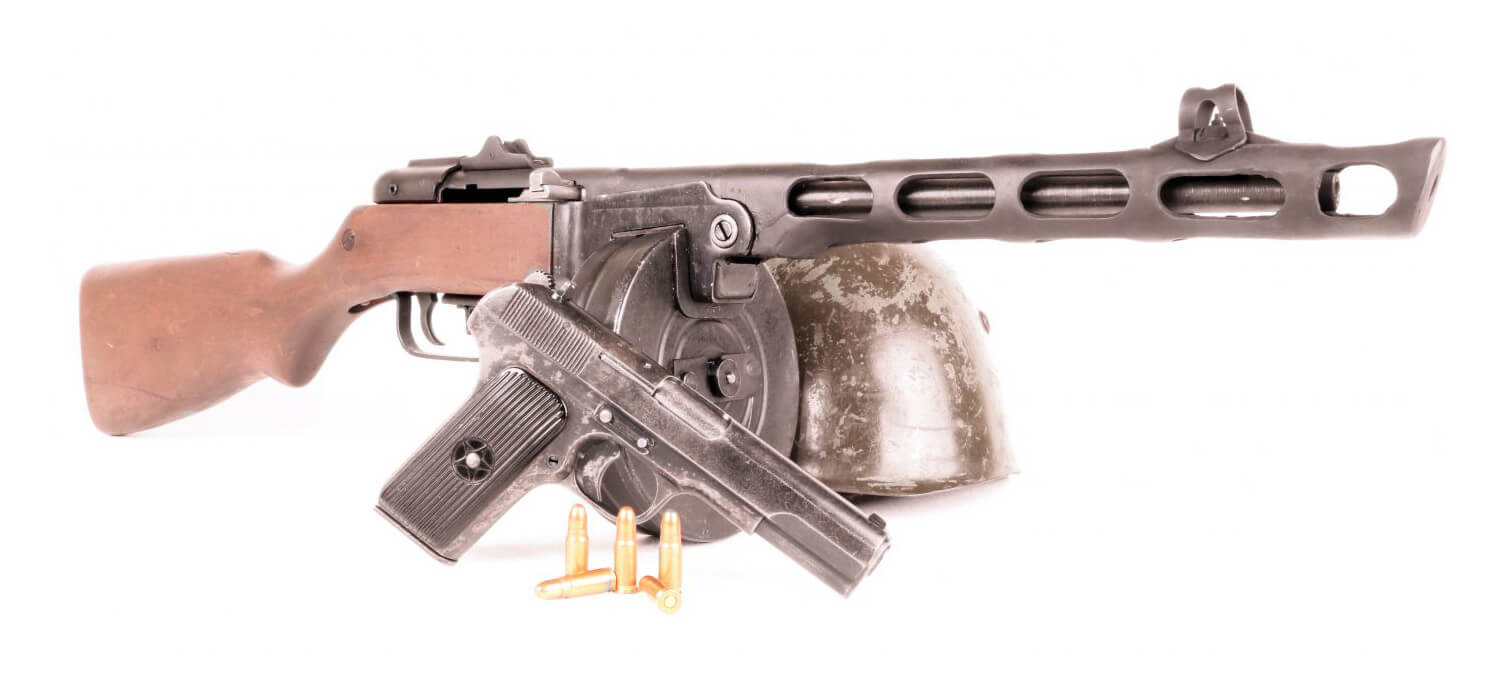
Though the Soviets ultimately used several SMGs, it was the PPSh-41 that became a national icon. Designed by Russian small arms designer Georgy Shpagin, this 7.62x25mm bullet hose was called the “papasha” by those who used it. This loosely translates as “Daddy.”
The selective-fire PPSh-41 orbited around a simple pressed steel receiver and one-piece wooden buttstock. The gun fed from either a curved 35-round stick magazine or a 71-round drum. The Soviets eventually equipped entire battalions with this fast-firing weapon. With a cyclic rate of around 900 rpm, the PPSh was a fearsome close-quarters tool.
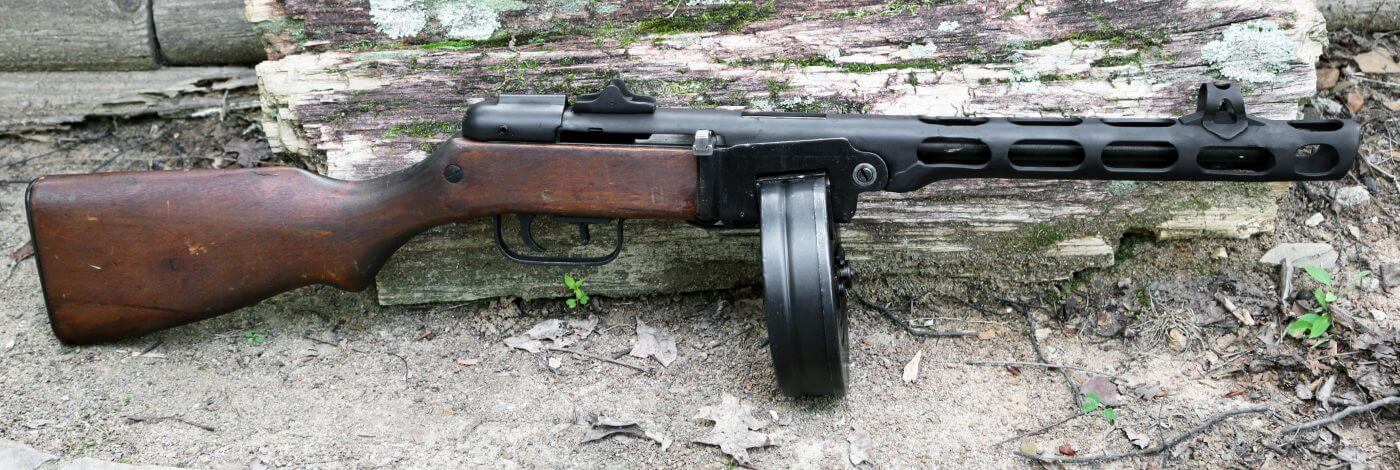
The Soviets produced around six million copies, and the gun remained in service in some of your less well-funded war zones well into the 1970s. The PPSh is awkward to carry and, in my opinion, unpleasant to shoot. I find the rate of fire to be a bit fast for my tastes, and the gun is notorious for ejecting straight up and dropping empties on top of your head.
United States
The United States entered World War II with whatever it had handy. As regards submachine guns, that meant the .45 ACP M1928A1 Thompson. Heavy, cumbersome, and expensive, the Thompson was obsolete before the first bomb fell at Pearl Harbor.
The M1928A1 was nearly identical to the M1921 John Dillinger used to terrorize the countryside during Prohibition. Built around a heavy milled receiver, the M1928A1 cost $209 in 1939. That’s about $2,900 today. The gun took 50-round L-drums as well as 20 or 30-round double-stack, double-feed stick magazines.
In 1942 the M1928A1 was extensively redesigned to make it cheaper to manufacture. The new design binned the Cutts compensator, finned barrel, controversial Blish lock, and internal felt oiler. It also moved the actuator from the top to the side. This is the easiest way to tell the two guns apart at a glance. By 1945 the price of a Thompson had dropped to $45, or $630 in today’s money.
The .45ACP selective-fire Thompson is ergonomically wretched and sinfully heavy. The line of recoil is substantially above the buttstock, and the gun is severely back heavy. However, at 10 pounds empty the gun remains controllable with proper technique. The M1928 runs at around 600 rpm, while the later M1A1 cycles closer to 800. We produced about 1.5 million Thompsons of all varieties.
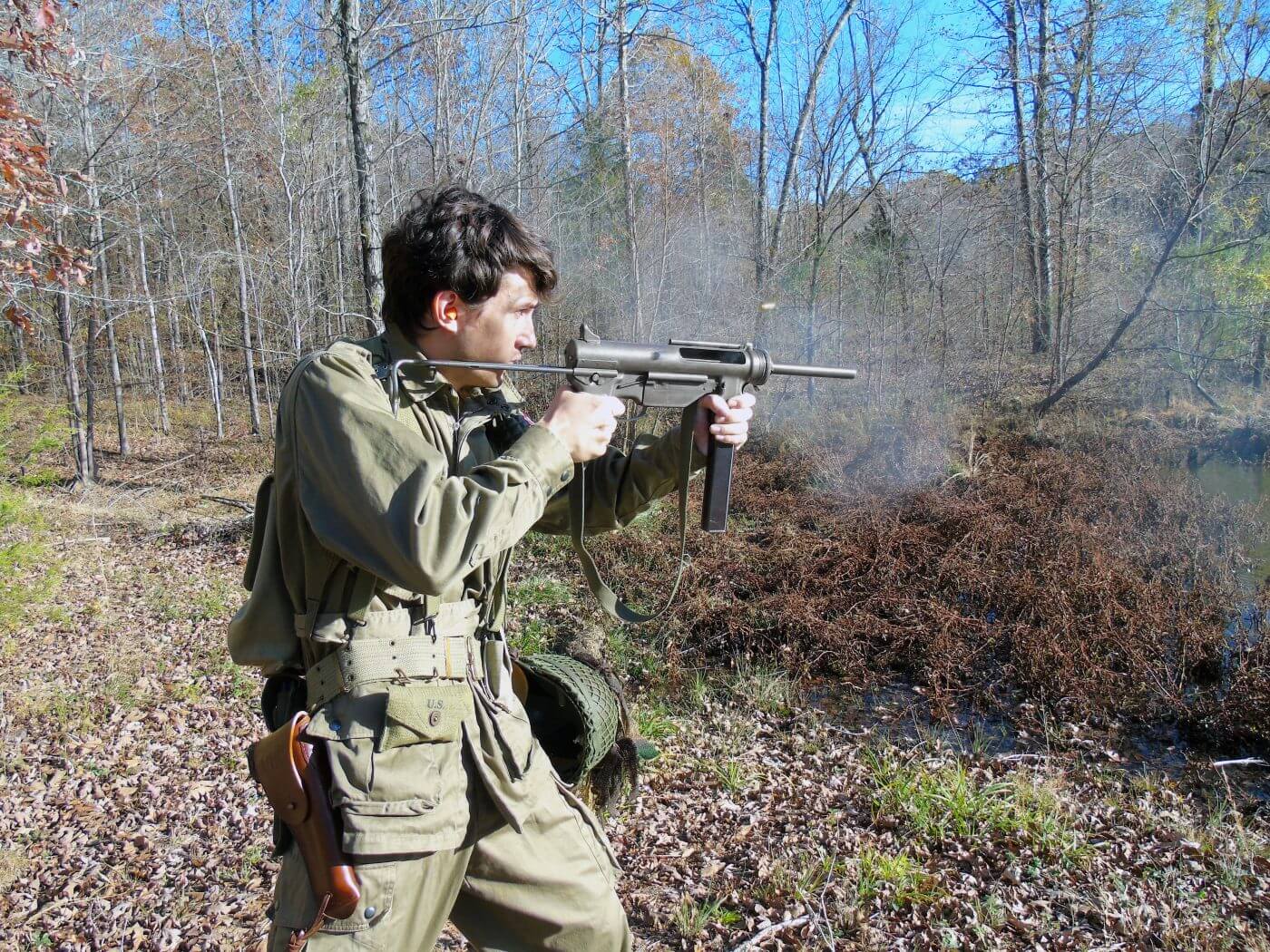
The same practical exigencies that drove the British to produce the Sten also spawned the American M3 “Grease Gun.” A rugged, cheap, pressed-steel design, the full auto-only .45 ACP M3 fed from a double-stack, single-feed 30-round magazine and cycled at a sedate 450 rpm. The Grease Gun moniker arose from the weapon’s similarity to that ubiquitous mechanic’s tool. The M3 cost $15, or around $225 today.
The first combat use of the M3 in Europe was during the Normandy invasion. The M3 included a flimsy ratcheting cocking device that was prone to break under hard use. The Army did not stock spare parts for the Greaser, preferring to simply discard broken weapons and replace them. The subsequent simplified M3A1 saw limited service at the very end of the war. This gun did away with the ratcheting charging mechanism in favor of a simple divot in the bolt to accept a standard human finger.
The Grease Gun’s grip is uncomfortably large, but it is a nonetheless effective close-range weapon. The gun carries well and will continue to function despite the most egregious abuse. The M3A1 Grease Gun remained in service with U.S. Army tank crews well into the 1990s.
Special thanks to www.worldwarsupply.com for the cool replica gear used in our photographs.
Editor’s Note: Be sure to check out The Armory Life Forum, where you can comment about our daily articles, as well as just talk guns and gear. Click the “Go To Forum Thread” link below to jump in!
Join the Discussion
Continue Reading
Did you enjoy this article?

 347
347






